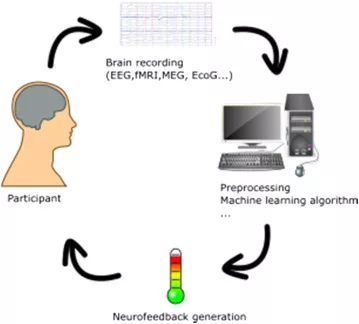 Neurofeedback is one of the safe, alternative therapies the BART Foundation believes may help brain injury survivors. The BART Foundation aims to promote better outcomes for TBI/ABI survivors by answering three questions – which alternative therapies are likely to work, where can they be found, and how can they be afforded? One of the ways we fulfill our mission is by carefully watching global research and clinical trial outcomes and sharing that information, in user-friendly language, with the TBI/ABI community.
Neurofeedback is one of the safe, alternative therapies the BART Foundation believes may help brain injury survivors. The BART Foundation aims to promote better outcomes for TBI/ABI survivors by answering three questions – which alternative therapies are likely to work, where can they be found, and how can they be afforded? One of the ways we fulfill our mission is by carefully watching global research and clinical trial outcomes and sharing that information, in user-friendly language, with the TBI/ABI community.
In this November 2021 article from Revue Neurologique, researchers reviewed the general methodological principles behind neurofeedback and describe its behavioral benefits in clinical and experimental contexts. They also review the non-specific effects of neurofeedback on the reinforcement of learning networks and the more specific changes in the cortical networks where neurofeedback control is most exerted. Lastly, current challenges and limitations of recent neurofeedback studies are brought forward.
Neurofeedback is a tool that records the brain activity of the participant and provides feedback on this brain activity in real-time. The benefits of this approach are two-fold:
- the participant can see the activity of a specific brain region and its effects on behavior; and
- cognition can be enhanced by the participant exerting control over their brain computations and seeing these actions in real-time.
Brain activity is fed back to the participant in multiple ways. In one instance, the participant may hear their brain activity through an auditory signal indicating intensity. In others, the participant can be shown their brain activity as a virtual reality ball approaching or moving away from a target, a disc changing in size, or a gauge filling up at varying speeds. Task difficulty can also be manipulated such that the task becomes more (or less) difficult as a function of brain information during the exercise. All these types of neurofeedback work to establish a relationship between the participant’s brain activity and the task they are working on.
EEG-based neurofeedback (EEG-NFB) has been successfully used in TBI and stroke to rehabilitate learning and memory, attention, and even as part of motor rehabilitation. Our hope is that this treatment will become more common and available to TBI/ABI survivors as a way to improve activities and skills impaired by their injury.
